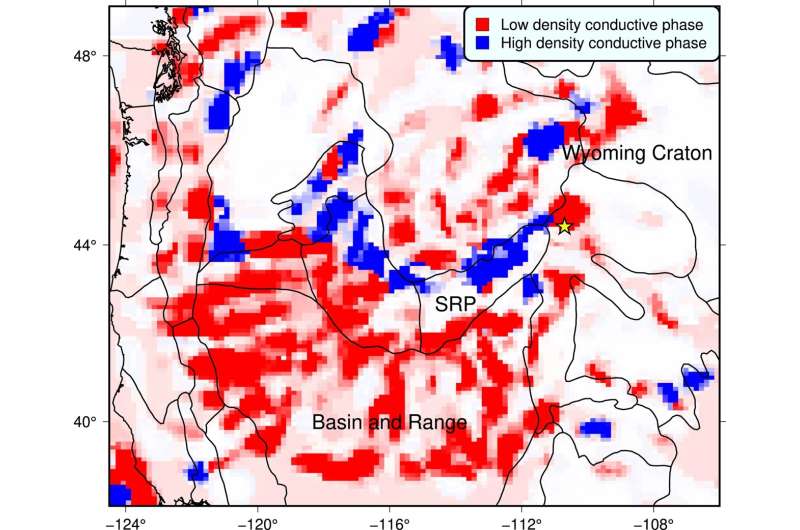Investigating Earth's interior using the distribution of electrical conductivity and density in the crust

Knowledge about the structure and composition of the Earth's crust is important for understanding the dynamics of the Earth. For example, the presence or absence of melt or fluids plays a major role in plate tectonic processes. Most our knowledge in this area comes from geophysical surveys. However, the relationship between measurable geophysical parameters and the actual conditions in the Earth's interior is often ambiguous. To improve this state of affairs, LMU geophysicist Max Moorkamp has developed a new method, whereby data on the distribution of electrical conductivity and density in the Earth's crust is combined and processed using a method derived from medical imaging. "The advantage is that the relationships between the two parameters are part of the analysis," says Moorkamp. "For geophysical applications, this is completely new."
Using the new method, Moorkamp was able to show that previous assumptions about the spatial distribution of magma and fluids in the western United States may be overly simplified. Based on measurements of electrical conductivity, researchers had previously assumed that molten rock (magma) and fluids are widespread in geologically young and active regions, whereas older and stable regions are virtually fluid free. "However, the new results show a more complicated picture," says Moorkamp. The electrical conductivity of molten rock and fluids is very similar to that of solid graphite and sulfides—in contrast to melts and fluids, however, these are a sign of old geologic activity.
By virtue of his method, Moorkamp was able to distinguish between the two for the first time and so demonstrate that even in the very active region around Yellowstone, there are fluid-dominated structures directly adjacent to fluid-free areas with graphite and sulfides. From these findings, the geophysicist concludes that compared to current geologic activity, geologic history—i.e. earlier plate tectonic processes—have much greater influence on the location of fluids than previously assumed. This could require a revision of previous results not only in the United States but around the globe. In addition, the technique could be very useful in the search for geothermal energy or mineral deposits.
The study is published in Geophysical Research Letters.
More information: Max Moorkamp, Deciphering the State of the Lower Crust and Upper Mantle With Multi‐Physics Inversion, Geophysical Research Letters (2022). DOI: 10.1029/2021GL096336
Journal information: Geophysical Research Letters
Provided by Ludwig Maximilian University of Munich





















